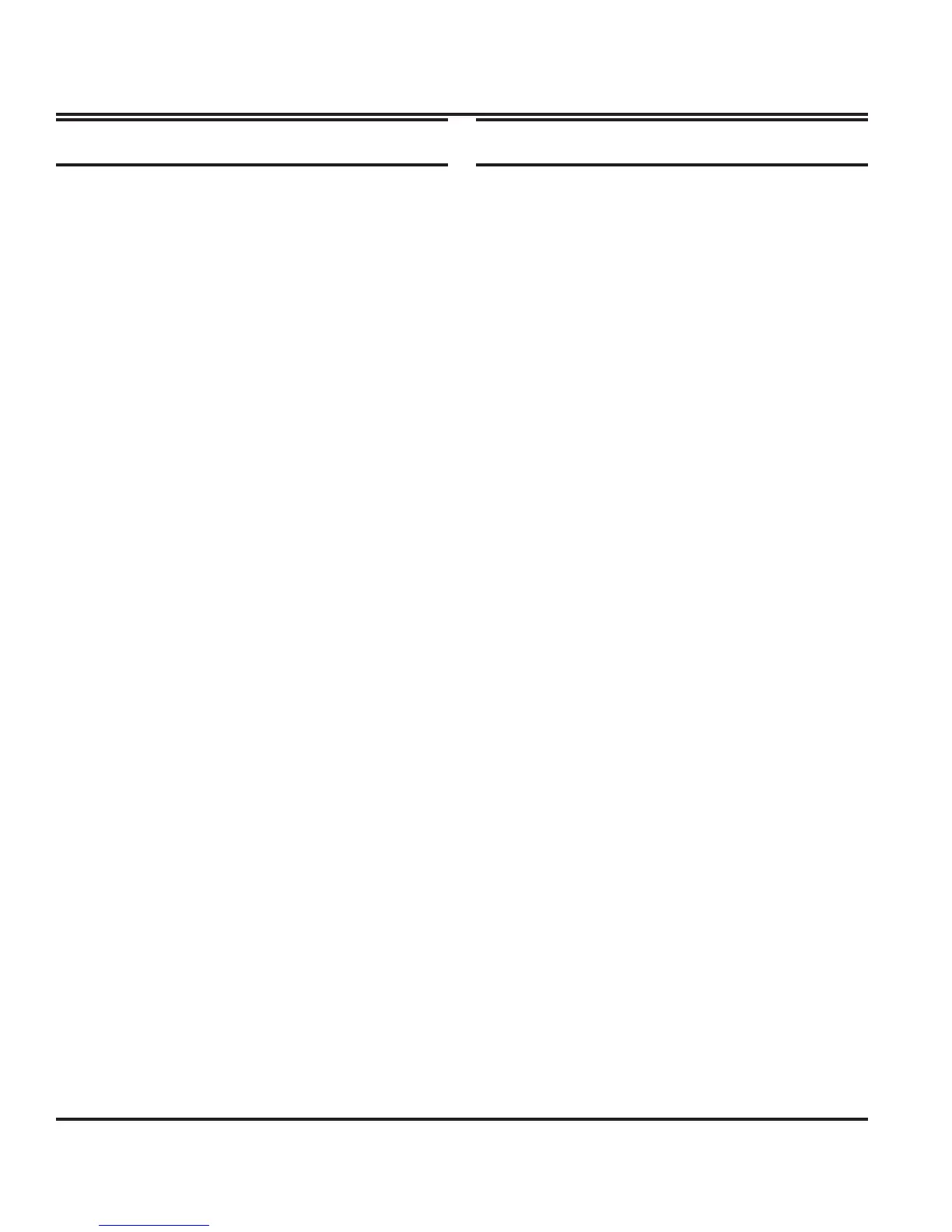Sails and Rigging
12.8
12.10 B&R Rig With Struts Description
Struts (not fitted to all models or mast options)
The B&R rig, utilized on the Hunter, eliminates the need
for a backstay to allow for a more efficient mainsail shape.
Fixed backstays are commonly being designed out of
today’s performance-oriented boats to allow the mainsail
to incorporate a full roach design - a more aerodynamic
shape both for racing and cruising performance.
To accomplish this, the B&R rig has 30 degree swept
spreaders, creating 120 degrees between each rigging
point. This tri-pod arrangement has excellent strength
for sailboat rigs, and has been used for years to support
huge radio towers.
Additional support is given to the B&R rig (and is unique
to it) with the addition of reverse diagonal rigging. For
example, the diagonals that you see beginning by the
top of the mast strut, ending at the tip of the spreader,
supports and stabilizes the upper section of the mast as
it creates a triangle with the upper shroud.
The B&R rig is designed to be pre-bent to further add
rigidity to the mast section and eliminate the need for
adjustable rigging (like backstay adjusters). This design
should prove more reliable than a rig with adjustable
backstays or runners, as there is less chance for error.
The large main, small jib, sail plan also eliminates the
need for large overlapping headsails (genoas), as the
driving power comes from the much improved shape and
size of the mainsail. This offers an easier tacking small
jib, creating good performance and more comfortable
sailing as it is less work for the crew.
As the large main is creating additional mainsheet and
leach loading, Hunter has included a cockpit arch whereby
the mainsheet and leech loads are directed to the strong
part of the boom (the out-board end) and is located at the
heaviest loading point of the mainsail. The cockpit arch
serves additional safety and comfort functions as hand-
holds and cockpit canvas attachment points.
B&R rigs have been used on thousands of sailboats, and
we are proud to incorporate this successful design on
your new Hunter.
12.11 Tuning the B&R Rig
(The information below is Hunter Marine’s opinion and
should not be considered complete or exact list of rec-
ommendations. Refer to OEM manual for more details)
The easiest method for tuning the B&R rig is to perform
step one as follows before the mast is stepped, with it
lying aft side down on two sawhorses. Begin with all rig-
ging slack. If the mast is already stepped, loosen all the
rigging, and then proceed to step one.
Start with all the rigging slack. Then induce the mast
bend by tightening the reverse diagonals (diamonds).
Measure the bend by tensioning a line or the main hal-
yard between the masthead and the gooseneck. The
maximum amount of bend should be no more than
8” [203mm] for the standard rig and no more than 2”
[50mm] for the furling mast. Measured perpendicular
from the aft face of the mast to the halyard at the deep-
est part of the bend. It can be less than that based
on the sail shape and your own preference. The bend
should also be evenly distributed along the mast to give
a smooth shape. Keep in mind that bending a furling
mast may make it more difficult to furl and will not do
much to flatten the sail as in a standard rig. It is very
important that the mast also be straight from side to side
at this time. Tighten or loosen the reverse diagonals to
achieve this.
Step the mast with all shrouds attached but with the
turnbuckles completely loosened (if the mast was not
already stepped).
Attach the jib halyard to a cleat on the bow to support
the mast in a raked position (the masthead should be
about 2’-0” [~6cm] behind the step). Attach the verticals
and tighten them until you can just see the hole for the
cotter pin in the turnbuckle. Tighten the jib halyard until
you can attach the forestay. At this point the masthead
should be raked so that a weight hung on the main hal-
yard hangs about 1’ behind the mast step.
Use the main halyard to check that the mast is cen-
tered from side to side. Pull it tight and mark the hal-
yard next to the verticals chainplate. Now do the same
to the other side to see if the marks line up. If not,
tighten and/or loosen the verticals until the marks line
up. Once the masthead is centered, begin tightening
the verticals until the turnbuckles are approximately half
closed. While tightening the verticals you may notice
the bend in the mast increasing. Now you can tighten
the lowers, which will tend to straighten the lower part
of the mast. Be sure to tighten port and starboard sides
evenly.
1.
2.
3.
4.

